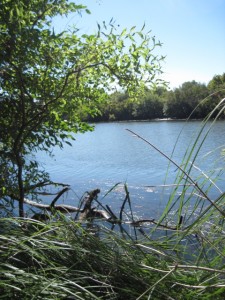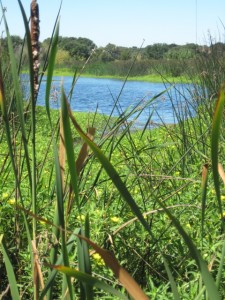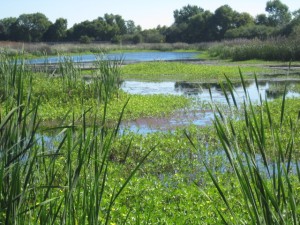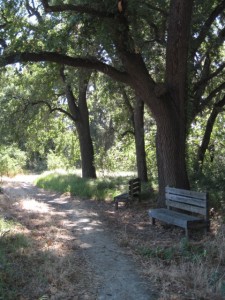On the edge of the Delta, is a river worthy of mention- the Cosumnes. Like the rest of the rivers in the area, the Cosumnes has human pawprints all over it. But whereas other rivers continue to be controlled and highly engineered, the Cosumnes is an incredible experiment in allowing a tamed river to run feral again.
With no dams on the river’s main channel (read: there are dams on its upper feeder creeks), the river stands apart from all its Central Valley neighbors- the Mokelumne, the Tuolumne, the Stanislaus. Like these powerful aquarine creatures, the river was controlled by a series of levees, until an accident showed us what we were missing.
It happened after the Nature Conservancy had bought land on the Cosumnes, establishing the Preserve in 1987. While looking at photos that had been taken a few years apart, the Conservancy noticed a little forest that was growing where there hadn’t been one before. When the group approached the farmer, whose land butted up against this fledgling forest, he sheepishly admitted that there had been a small breach in one of his levees the winter before. All of a sudden, an accident had created an incredible ecological example, as the Conservancy saw the immediate benefits of flooding.
Just like the rivers that carry their sediment to the Delta, making it fertile, rivers
that flood their banks leave a rich layer of nutrients behind. Certain trees, like willow trees and box elders, valley oaks and cottonwoods love seasonal flooding. Not only does it leave food behind, but it takes with it competitive weeds and also any rodents that may prey on saplings.
For the past while, us human have loved nothing more than putting a river in a box. The Army Corps of Engineers made their living on it. But now, we are seeing the benefits of a river left to its own course. Animals love this sort of home. All sorts of migrating birds, Swainson’s hawks and sandhill cranes among them, make a stop at Cosumnes. River otters, beaver, muskrat all find a place. Tule rushes and cattails propagate happily in the wetlands.
Cosumnes has become, not only an environmental success, but also a great example of how human use and the environment can co-exist. Juggling the different needs of recreational and agricultural human users as well as those of the ecosystem, the Preserve is helping to create a model that could apply to other places in California.
 The Conservancy has worked with farmers in the area to encourage farming rice and corn in a way that supports the migration of different waterfowl, including the sandhill crane. While agriculture by itself has its own delicate timing issues, some farmers in the area have altruistically added yet another factor by deciding when to flood their fields or harvest a crop based on birds’ rhythms. For instance, flooding fields at a time when birds need a watery habitat. The Preserve has also worked with duck hunters, who have been a force for preservation of waterfowl habitat in the Delta. It is this balancing of human and ecological needs that California will need in its relationship to water.
The Conservancy has worked with farmers in the area to encourage farming rice and corn in a way that supports the migration of different waterfowl, including the sandhill crane. While agriculture by itself has its own delicate timing issues, some farmers in the area have altruistically added yet another factor by deciding when to flood their fields or harvest a crop based on birds’ rhythms. For instance, flooding fields at a time when birds need a watery habitat. The Preserve has also worked with duck hunters, who have been a force for preservation of waterfowl habitat in the Delta. It is this balancing of human and ecological needs that California will need in its relationship to water.
I have one more favorite thing about the Cosumnes River to relate:
Having a natural affinity for the rhythm of the ocean, I was interested to hear that the Cosumnes is a tidal river- meaning it is close enough to the ocean, to be affected by the tides. Twice a day, the river level rises as much as six feet. This little piece reminds me of how connected all water is- a river to the ocean, the ocean to the clouds, the clouds to the rain, and the rain to the mountains that rivers roll from.
the Cosumnes is a tidal river- meaning it is close enough to the ocean, to be affected by the tides. Twice a day, the river level rises as much as six feet. This little piece reminds me of how connected all water is- a river to the ocean, the ocean to the clouds, the clouds to the rain, and the rain to the mountains that rivers roll from.



And the wonder of it all to us!